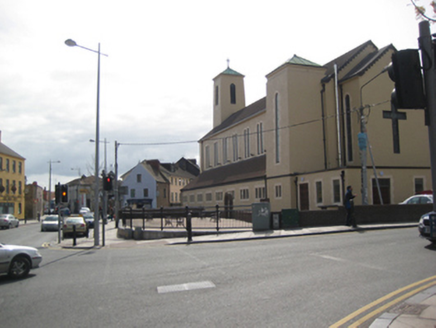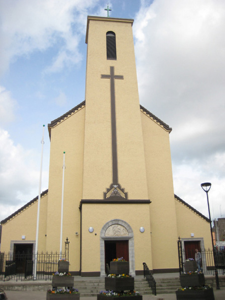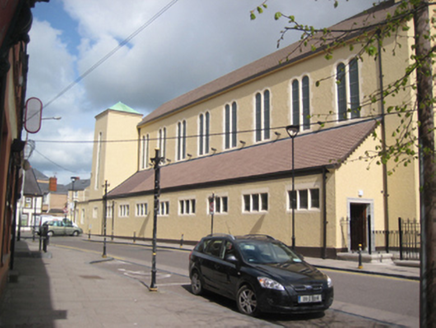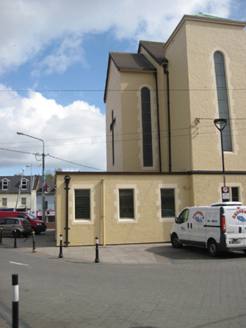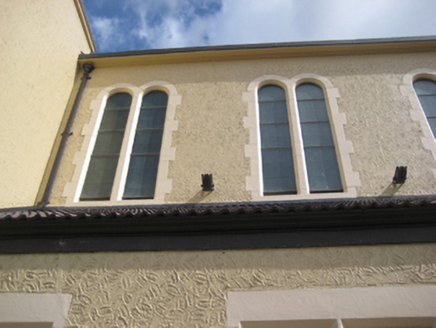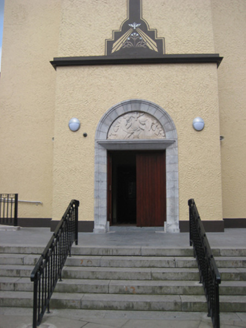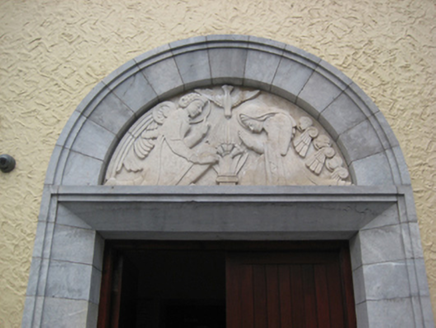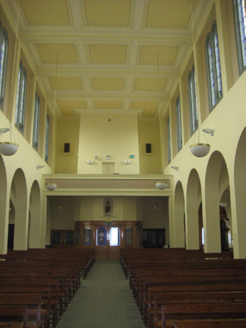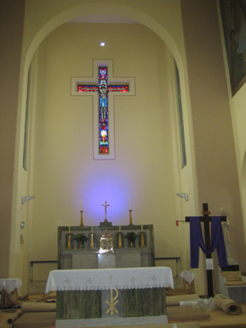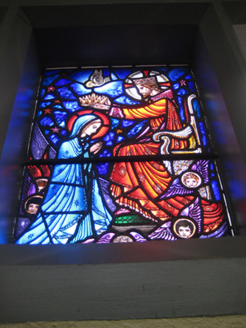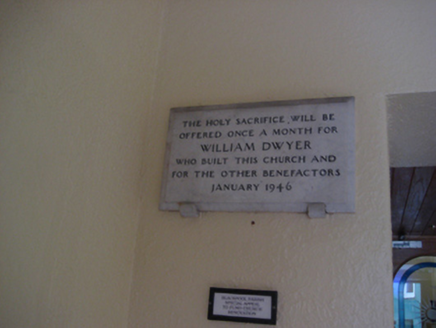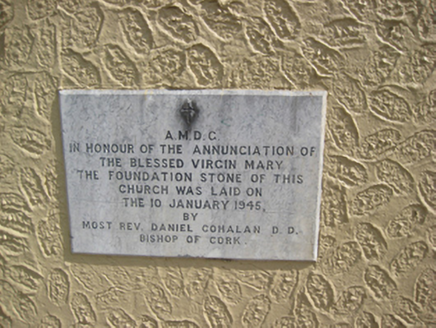Survey Data
Reg No
20862036
Rating
Regional
Categories of Special Interest
Architectural, Artistic, Historical, Social
Original Use
Church/chapel
In Use As
Church/chapel
Date
1940 - 1950
Coordinates
167434, 73263
Date Recorded
12/04/2011
Date Updated
--/--/--
Description
Freestanding gable-fronted Roman Catholic church, commenced 1945, having three-stage square-plan entrance tower to south, two towers to the rear (north) elevation forming transepts, eight-bay nave side elevations, east and west aisles and flat-roofed sacristy to north. Pitched pantiled roofs, copper-clad pyramidal roofs to towers, copper crucifix finial to front tower, profiled metal rainwater goods. Painted stippled render walling with smooth render dressings, smooth render crucifix to south tower wall. Paired round-headed window openings to clerestory, square-headed openings to side aisles, in smooth render block-and-start surrounds with splayed sills and leaded stained glass windows. Square-headed door opening in round-headed dressed limestone surround having carved Portland stone tympanum and timber matchboard double doors, accessed via set of steps from street level. Interior with painted coffered ceiling, painted stippled render walls, carpeted flooring. Choir to south, round-headed arches to side aisles, central aisle between timber pews, marble altar and rails to side chapels. Street-fronted, located in central island between streets.
Appraisal
The Church of the Annunciation is a notable example of mid-twentieth-century ecclesiastical architecture. Designed by noted Irish sculptor and Blackpool native, Seamus Murphy, along with architect E.P. O'Flynn, it is of concrete block construction and very characteristic of its period. Built on the site of a former church, St Nicholas’, dating from the 1890s, it was built with funds donated entirely by William Dwyer, Managing Director of Sunbeam Ireland and his staff. The contribution to its design and the striking stonework, tabernacle, lamp, candlesticks and other brasses designed by Seamus Murphy and stained glass windows by the Harry Clarke Studios contribute to its artistic significance. Prominently sited, this church forms a local landmark in the area.
